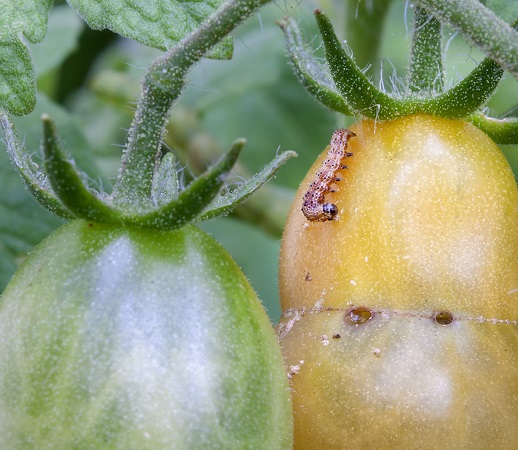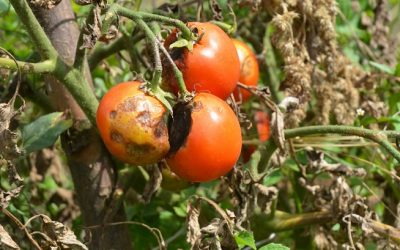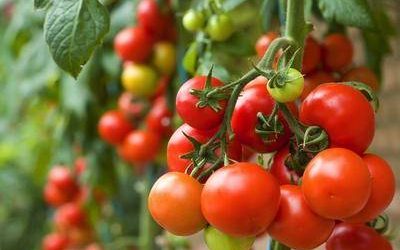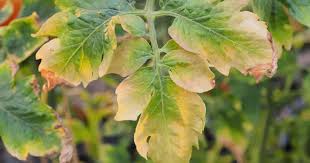Tomato pests and their control.

Cutworms.
Green or brown caterpillars that curl into a C shape when disturbed. They eat young plants at the soil line at night, and can leave a healthy seedling cut off entirely and lying on the ground.
Controls: Eliminate weeds around garden beds at least two weeks before planting. Handpicking cutworms at night may help, or you can protect seedlings with cardboard collars or one or more toothpicks (inserted close and parallel to the stem).
Aphids.
Affect tomatoes, especially vigorously growing ones.
Controls: A handful of aphids won’t hurt a healthy tomato plant, but if new leaves are curling or the shoots are coated in aphids, crushing aphids by hand or blasting them off with a strong jet of water will control them.
Hornworms.
Are voracious eaters of tomato plants and fruit. They are large (1” to 4”) green caterpillars with a prominent horn on the tail end; they will eat leaves, small stems, and fruit, sometimes stripping young plants entirely. The mature caterpillars drop to the ground and pupate in the soil over the winter.
Fruit-worms, also known as corn earworms, are about an inch long, pale green or brown, sometimes striped. They burrow under the stem end of tomato fruit to create messy warrens full of brown frass.
Controls: Hand-picking caterpillars in the early evening, when they are most active, is quite effective.
Rototill or thickly sheet-mulch beds to destroy pupae between seasons. Bacillus thuringiensis or spinosad sprays, both organic, can help with control. General predators, such as preying mantises or wasps, also reduce populations.
Stinkbugs are an annoyance to tomato growers, as their feeding can cause corky white patches under the skin of ripe tomatoes. These patches don’t peel easily when cooking or canning the fruit.
Controls: Hand-pick stinkbugs or snip them with garden shears; a bucket of soapy water held under them can help, as they often drop when disturbed. Eliminate weeds around garden beds at least two weeks before planting. Insecticides are not recommended.
Snails and Slugs can be a problem, especially if plants are on or near the ground. They rarely bother foliage on mature tomatoes, but they can eat large chunks of ripening fruit if they have easy access.
Controls: Keep tomato plants and especially fruit off the ground by using cages or staking.


